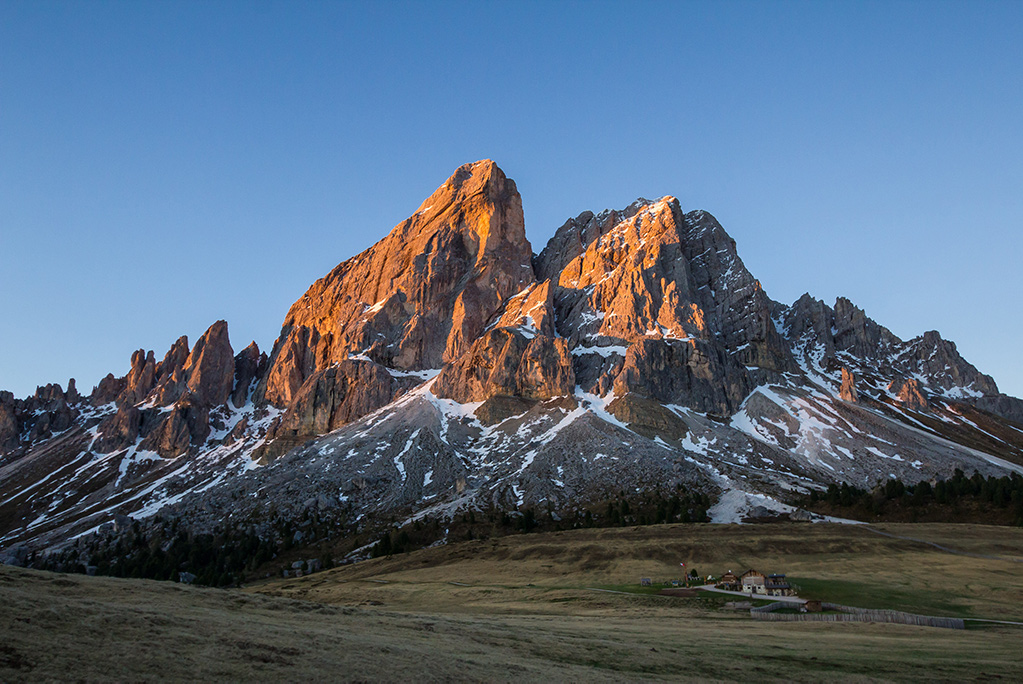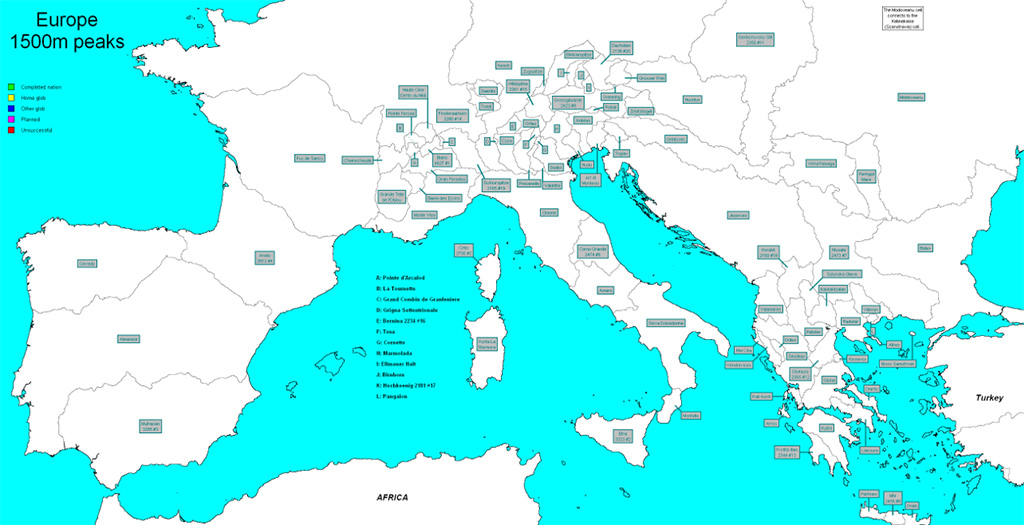Topographical Mountain Prominence along with mountain summit elevation are the two most important characteristics of any peak. It is calculated as the least vertical drop to be covered to get from the summit to any other higher terrain. The lowest point of the vertical drop is called the Key Col. Through the key col a hypothetical mountaineer can get to the topological parent which is the highest point of the terrain reachable without going lower than the key col.
Some time ago mountain enthusiasts were actually mapping their way to the mountain by exploring the minimal change in elevations. They attempted to study the prominence in a virtual distant mode by analysing the 2D maps. Enormous work has been done over the decade by pioneers Aaron Maizlish from PeakList.org and Jonathan de Ferranti from ViewFinderPanoramas.org. Among other achievements, they compiled and map-checked thoroughly by hand large lists of mountains all over the world.

A standard approach to automatic prominence calculation is based on Digital Elevation Maps (DEMs). DEMs provide information about terrain elevation in a regular grid. There have appeared many providers with permissive licenses in recent years. One of the most convenient hubs for the DEM datasets is the abovementioned ViewFinderPanoramas.org by Jonathan de Ferranti.
Let’s imagine that an imaginary sea level is exactly at the level of a mountain which prominence we are trying to calculate. Now pull the plug and slowly lower the sea level. The mountain forms an island. The lower the water goes, the bigger the island becomes. It merges with other islands. Eventually, the island will touch a piece of land with a point higher than the starting mountain. This is the moment when we find
- the topological parent - the highest mountain on the last contacted island
- the key col - the place where two islands adjoin
- the prominence - elevation rise from the key col to the summit.
Taking the idea of prominence islands a little bit further one could get to the Lineage Cells concept, which is a fantastic way to convert mountains into small (or not so small) kingdoms. For example, this is an interesting map of the European Ultra peaks (with prominence higher than 1,500m) making a brand new look of European boundaries. Which Kingdom would you like to hike?

The observation of the prominence characteristics generates interesting insights. If you see that prominence is equal to elevation of a summit then this mountain is the highest point on a landmass: volcano Etna on the island of Sicily, Mauna Kea on the island of Hawaii, Aconcagua in South America (the highest in the Southern Hemisphere).
Calculating prominences for hundreds thousands of peaks is extremely expensive procedure. Obviously, it depends on the amount of summits and precision but for a slightly less than a million and 1’’ DEMs it takes us more than a day on a very fat server to compute all the prominences.
The automatic computation is subject to several sources of error:
- Imprecise location of summits
- Biased Digital Elevation Model
Luckily, some space agencies and many government institutes regularly improve DEMs and GIS data (summit names and their precise locations). The challenge is in merging and pre-processing various sources into one dataset with a common format.
There’s slightly above 1.000.000 named mountains and hills in our database and we calculate their prominence every time the terrain model is improved. Usually, that happens every time more precise data becomes available, which makes PeakVisor an ideal source of precise topographic prominence data. You could use it in any project, we just kindly ask for a proper mention with a link to the PeakVisor website.
Finally, you could find our prominence calculator published on GitHub and get into nitty gritty algorithms.
For those who want to know more about the prominence here are several useful links:
- The Prominence Theory - an in-depth essay on the topic
- Topographic Prominence - a Wikipedia feature with a variety of useful information and links
